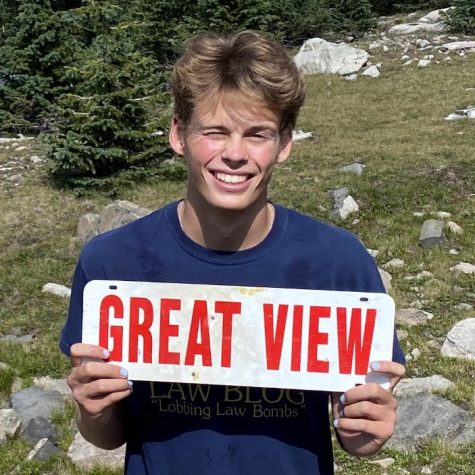The Golden Era of Beach Volleyball
The crowds are roaring in the city of Hamburg, Germany. Horns are blowing and the sun is shining down on the world championships. The stadium is one of the largest in the world and the crowds are some of the most energetic. Ex-rave DJs provide the party. The atmosphere of beach volleyball is unmatched in enthusiasm and community. Anders Mol and Christian Sorum, the two up and coming “young guns” of the World Tour are busy attempting to clinch their seventh FIVB (Fédération Internationale de Volleyball) win of the season. The pair has been decimating competition all year, even though both are only in their early twenties. Earning a Red Bull sponsorship and going to school at a beach volleyball academy obviously helps your chances of success, but it doesn’t mean that these two aren’t completely changing the way that volleyball is played. Mol—a monster at the net whose acrobatic “piking” moves have earned him the top blocks-per-set statistic in the world—paired with Sorum—a defender whose feet never stop moving and whose consistent swing makes him just as threatening as Anders to serve—is defining modern beach volleyball.
Beach volleyball is growing faster than ever before, and with petitions for funding and NCAA recognition gaining traction, the sport is making its way back into America. The main fan base has been in Europe for a long time, where volleyball’s party-based sports environment triumphed in viewership and attendance. There was a time in American history where volleyball was frequently watched, though. It aired on Fox Sports and held championships on beaches across the United States. This was the “golden era” of the Association of Volleyball Professionals, the AVP. When could the American people possibly have been this dedicated to a large-scale beach party? To answer that, we have to throw it back to the ’80s, of course.
The Manhattan Beach Open is the grandfather of all beach volleyball tournaments. Held at the iconic California beach, this tournament is home to rivalries, history and some of the best athletic feats on the planet. The original beach volleyball tournaments were held here. Before people even had to qualify for the AVP, anyone could enter and play against the greats. This is where the beach volleyball atmosphere started.
This was the breeding ground for legends like Karch Kiraly (pronounced “KER-EYE”) and Sinjin Smith. Kiraly and Smith attended UCLA at the same time and both played outside hitter. Kiraly went on to win a gold medal for the US National Team as their youngest player in history. Afterward, he and Smith took their talents to the beach and won their first-ever AVP title together. Kiraly and Smith had taken the volleyball world by storm, and people expected the pair to do great things together. In 1992, Kiraly quit indoor volleyball and went full time on the beach, choosing Kent Steffes as his new partner. Ever since their victory in the ‘80s—and the partner split that followed—Smith and Kiraly were arch-enemies. These fierce competitors would stop at nothing to try and hold the title “King of the Beach.” The animosity between these two players took hold of the volleyball world, and all eyes were on the drama of the AVP. In the previous link (around the one minute mark), Karch Kiraly can be seen tearing down the net in anger after a bad call by a ref. Exciting moments like this one allowed Karch Kiraly to define the sport and culture of beach volleyball for that era. It truly was a beach party, and the viewership never complained. Kiraly’s iconic hot pink SPEEDO hat was the symbol of Manhattan beach. Players wore short shorts: leopard print, neon and all vibrancies you could think of. That’s the saddest part of the sport’s evolution: the shorts got longer.
Now, beach volleyball is the fastest-growing women’s NCAA sport (although men’s NCAA beach volleyball doesn’t yet exist). There are petitions all over the world to preserve and grow beach volleyball. Unfortunately, it’s just not popular in so many places, so people don’t know what they’re missing. The culture is full of love, support and absolute fun. The sport’s powerhouse athletes aren’t there to make you feel small, they’re playing to show you how they do things. Volleyball is about asking for impromptu coaching sessions on a beach in California when you see a random pro. Volleyball is about you and your friends figuring out how to do the things you see the Italian legend Adrian Carambula do in the FIVB. Volleyball is a beautiful display of athleticism and motion. Volleyball is playing until you’re fifty years old and not wanting to stop anytime soon. Everyone I know that plays volleyball is in love with its culture and players. So if you want to be a part of our large-scale beach party: join us. We’re the ones in short shorts and Oakley’s screaming about whether or not that set that someone just put up was “juice” or “chowder.”

Keeton is a senior at Boulder High and is a new addition to The Owl. Keeton has always preferred language-based learning formats, and is excited to see how writing in this specific facet will allow for undiscovered creative freedom. Keeton spends his time playing beach volleyball--a sport that has somehow made it to one of the most landlocked places in the country--and playing music. He’s taken particular interest this year in adventuring and mountaineering, supported by a trove of true Coloradan adults who are willing to talk about the outdoors for hours on end. Besides sports and music, Keeton can be found with his friends most days. They may be rating movies and directors, talking about...


Halie Leland • Oct 30, 2020 at 9:07 pm
I’m an indoor player but I will admit beach is so much fun!